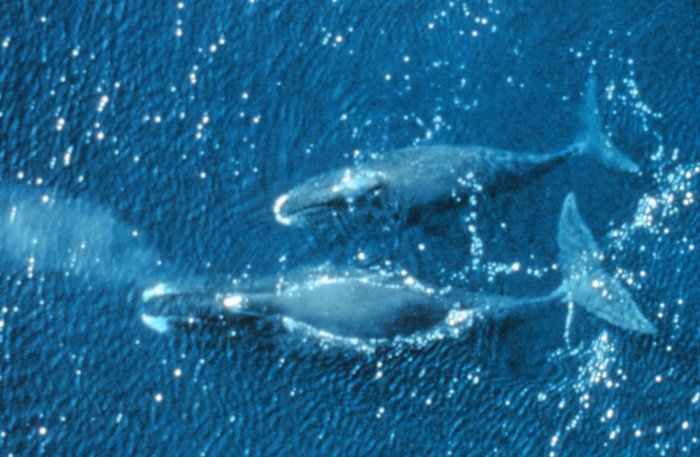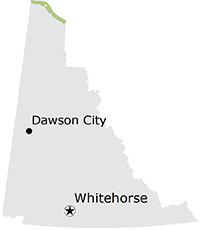
Name
- Common name: Bowhead Whale
- Scientific name: Balaena mysticetus
- Order: Cetacea
- Family: Balaenidae
Other names
Arctic Right Whale, Polar Whale, Greenland Right Whale
Viewing opportunities
- Bowheads are usually seen far off the Yukon’s north shore in late July through September.
Description
- Large, robust body.
- Smooth back with no dorsal fin.
- Large head with strongly bowed lower jaw.
- Long baleen “teeth.”
Fast Facts
- Length: 20 m
- Weight: 75 to 100 tonnes
- Lifespan: 60 to 100 years
- Predators: Humans
- Habitat: Marine and Coastal
Conservation status
- Yukon: S3 (Vulnerable)
- Global: G3 (Vulnerable)
Yukon population estimate
Not determined.
Behaviour
The Bowhead Whale is social and non–aggressive, usually travelling alone or in groups of up to 6. It is a slow swimmer and can stay submerged for up to 40 minutes but is not thought to be a deep diver. It is highly vocal and will sometimes display breeching, tail slapping, and spyhopping.
Diet
Crustaceans like plankton
Distribution

Sights and sounds
Whales and people:
- Bowheads were easy targets for whalers because they are slow moving.
- Blubber was rendered into oil for use in street lamps, lubricants, tanning and steel tempering until commercial whaling was ended during the 20th century.
- Baleen was used for hair brushes, typewriter springs, umbrella ribs, fishing rods and corsets until whaling became unprofitable in the 20th century.
- Herschel Island was a whaling base until the early 1900s.
- Bowheads are protected from commercial whaling with some subsistence harvest allowed for Inuit people.